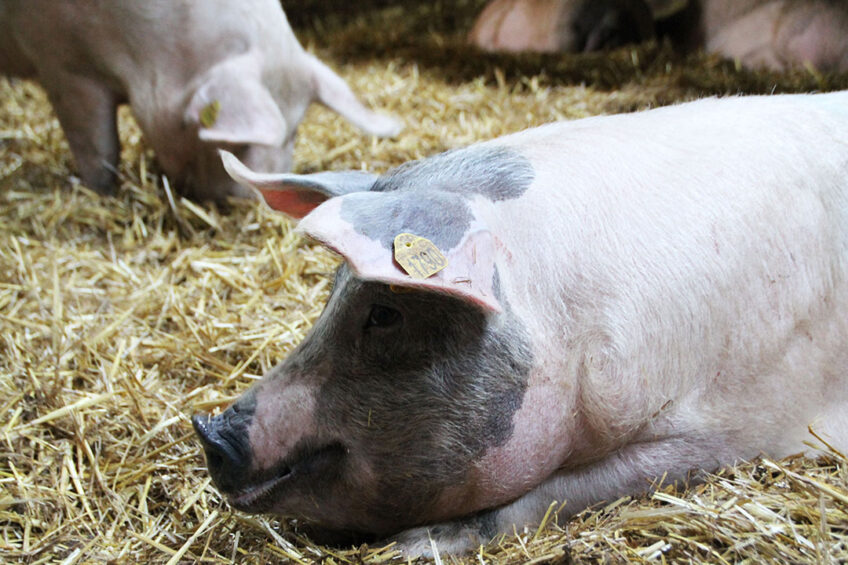ASF Germany: Outbreaks found in 3 pig farms (updated)

African Swine Fever (ASF) has now reached the domestic pig population in Germany. The virus was found on 3 small farms in Brandenburg state in Eastern Germany.
The confirmation of the finding was revealed this week. The national reference laboratory Friedrich-Loeffler-Institut (FLI) confirmed the finding in 3 sites, 1 in Spree-Neisse district and 2 in the Märkisch-Oderland district. Both are located in the direct vicinity of the border with Poland.
Farms with 200, 4 and 2 pigs
The farm in the Spree-Neisse district is the largest of the 3 and had 200 pigs on-site which are all being culled. The farm is located close to the village Preschen, at roughly 10 km from both the border with Poland as well as Germany’s Saxony state. According to the leading German agricultural title Top Agrar this was an organic pig farm with the possibility for the sows to go outdoors. The virus was detected in a dead pig as part of routine monitoring. So far it is unclear how the virus actually managed to get into the organic farm.
Top Agrar quoted Henrik Wendorff, president of the Brandenburg farmers’ association, saying: “According to our information, the operations manager has always complied with the requirements of the responsible veterinary office with regard to the prescribed biosecurity measures.”
At the 2 Märkisch-Oderland locations, just a few pigs were kept. On July 15, the 1st report came from a location in Kienitz-Nord with 2 pigs. Two days later, a location was confirmed with 4 infected pigs. According to a press release by the Brandenburg ministry for Social Affairs, Health, Integration and Consumer Protection (MSGIV) all 4 pigs were infected and 2 had died.
The 3 infected farms constitute the first that have been found infected with ASF virus in Germany. The virus has been around in Germany since September 2020 when the infection pressure from neighbouring Poland grew too strongly. In Poland the virus has been existing since 2014, a situation that got aggravated when a new ASF cluster popped up in Eastern Poland in November 2019.
Quick and consistent action against ASF
In a press release, Brandenburg’s minister for consumer protection Ursula Nonnemacher responded: “I would like to thank the local authorities for their quick and consistent action. It is now important that we quickly find the cause of the entry into the pig population so that we know which route the virus took. The necessary investigations have been initiated and are supported by the task force of the State of Brandenburg and FLI specialists, who we immediately asked for help. The fact that the cases were apparently found quickly shows that the animal disease monitoring works.”
By now, a permanent fence along the border rivers Oder and Neisse has been completed, Nonnemacher added. In total 6 core areas of infection have been identified. She added, “I would therefore like to appeal to all pig farms to strictly continue to adhere to the strict biosecurity measures, especially in very small farms, in order to prevent further outbreaks in domestic pig farms.”
Consequences for pig and pork trade
The finding of ASF in the domestic pig herd is another blow for the pig industry, which so far had managed to keep the virus outside the domestic pig herd. Top Agrar quoted the German Federal Ministry of Agriculture (BMEL): “The regionalisation in the EU and thus the possibility of intra-community trade in pigs and pork continue to exist as the domestic concerned pig populations are in the same regions. However, exports to 3rd countries are likely to be at risk again.”
ISN: No reason for panic because of ASF in pigs
On behalf of the German pig farmers organisation ISN, managing director Dr Torsten Staack urged to remain calm. He said, “Even now ASF has been determined for the 1st time in domestic pigs in Germany, there is no need to panic! The 2 affected operations are located within the already existing restriction zones in Brandenburg and have already been evacuated. Therefore, the situation for German pig farmers will not change significantly.
“With regard to the market, in any case Germany is blocked for exports to many 3rd countries because of ASF in wild boar. The regionalisation principle continues to apply at the European trade level, which means that there are currently no changes for the German sales markets in the EU.”
He added, “In addition, the supply of finisher pigs in this country is extremely low. It is at the level of 2007, an all-time low. Nevertheless, the German pig farmers are currently groaning under a ruinous price low. Specifically, they are currently making losses of €30-40/animal. Anyone who tries to keep the price down despite this described situation is shamelessly exploiting the situation with advanced arguments. We therefore expect a clear statement from customers in Germany – at least a stable price level is now the imperative and would be a correct signal to the German pig farmers.”
Poland keeps on finding ASF positive farms
In the meantime, the number of ASF infected pig farms on the other side of the border, in Poland, is increasing rapidly. Like in every summer the numbers spike during July and August. Ever since late June, 22 (predominantly smaller) pig farms have been found infected, of which 14 were in Western Poland. The latest addition to the Polish count included a farm in Greater Poland and one in Lesser Poland province, where until now no infections had been reported.
Ever since the first onset of ASF in Poland in 2014, now 364 farm sites reported outbreaks.











